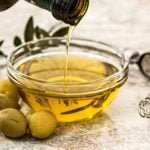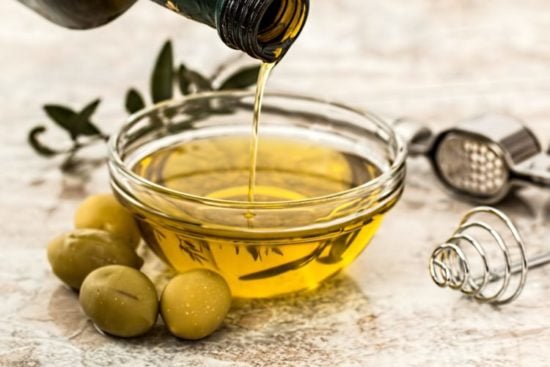The Ultimate Guide to Understanding Dietary Fats
Contributed by
Dr. Ankita Dhir Bhasin, MD
What are fats or lipids?
Fat, also known as lipids, is a type of macronutrient and is a concentrated source of energy, providing 9 calories per gram- more than double the energy provided by carbohydrates and proteins.
The various forms of fat in our body are triglycerides, phospholipids, and cholesterol with fatty acids being simplest form of lipids.
How do lipids function in our body?
The fats (triglycerides and cholesterol) taken up in the diet are broken into fatty acids, which a the body uses for various functions. Excess fats are stored as adipose tissue, which serves as a fuel reserve during periods of low food intake or increased energy demand. High-density lipoprotein, or “good cholesterol,” transports fatty acids from the blood to the liver for disposal. Conversely, low-density and very low-density lipoproteins (LDL or VLDL), also termed as “ bad cholesterol”, carry fatty acids from the liver to the bloodstream and increase the risk of plaque buildup and heart disease.

Why does our body need fat?
Phospholipids and cholesterol help maintain the structural integrity of cell membranes, which is vital for cell function. Fats also aid in absorbing fat-soluble vitamins (A, D, E, and K). Cholesterol, a type of fat, is also a precursor for producing many hormones, including sex hormones (estrogen, testosterone) and cortisol. The brain comprises about 60% fat, particularly omega-3 fatty acids, which are important for cognitive function, overall brain development, and maintenance.
Are fats essential in our diet?
The human body can synthesize almost all types of fat except two: Omega-3 Fatty Acids (Alpha-Linolenic Acid – ALA) and Omega-6 Fatty Acids (Linoleic Acid – LA). These are called essential fatty acids and they must be obtained through the diet.
What are the different types of fats in our diet?
Based on the structure of fatty acids, there are mainly three types of fats in our body:
A.Saturated fatty acids
1. Structure : These fats have no double bonds between the carbon atoms in their fatty acid chains, making them solid at room temperature.
2.Source : Red meat (beef, pork, lamb), poultry with skin, dairy products (butter, cheese, cream), coconut oil, palm oil, ghee, lard, tallow
3. Health impact :High intake can raise LDL cholesterol levels, increasing the risk of heart disease.
B.Unsaturated fatty acids :Unsaturated fatty acids can be monounsaturated (MUFA) or polyunsaturated fatty acids (PUFA). •Monounsaturated fatty acids (MUFA)
1.Structure : These fats have one double bond in their fatty acid chain
2.Source : Olive oil, canola oil, avocados, nuts (almonds, cashews, peanuts), seeds. •
Polyunsaturated Fatty Acid (PUFA)
1.Structure : These fats have more than one double bond in their fatty acid chains. Essential fatty acids
( Omega 3 and omega 6 are also PUFAs)
2.Source : Sources of omega-3 fatty acids include fatty fish (salmon, mackerel, sardines), flaxseeds, chia seeds, walnuts, and hemp seeds. Marine sources especially provide long-chain omega-3 fatty acids like eicosapentaenoic acid (EPA) and docosahexaenoic acid (DHA) which support brain function.
Common sources of omega-6 fatty acids : include vegetable oils (such as soybean, corn, safflower, and sunflower oils), nuts, and seeds.
Health impacts of unsaturated fatty acids : All unsaturated fatty acids, when consumed in optimal amounts are cardioprotective and decrease clot formation.
They increase HDL and decrease LDL. Omega-3s have anti-inflammatory properties, while omega-6s can promote inflammation.
A balanced ratio of omega-3 to omega-6 is important for managing inflammation and supporting overall health.
C.Trans fatty acids
1.Structure :These are artificially created through a process called hydrogenation, which adds hydrogen atoms to unsaturated fats, making them more solid and shelf-stable. Repeated heating of vegetable oils can also leads to the production of trans fats.
2.Sources : Processed and fried foods (bakery products, potato fries ) and margarine
3.Health Impact They significantly increase the risk of heart disease by raising bad cholesterol (LDL) and lowering good cholesterol (HDL).
How should we consume fats wisely?
1. The evidence-based guidelines recommend that fat should contribute to 20-30% of the total daily consumption.
For 2000 kilocalories, this equates to 600 kcal of total energy from fat, or 60-70 gms per day.
Moreover, out of 60 grams, limit the consumption of additional oils to up to 30 grams.
2. Reduce saturated fat intake to a maximum of 15 gms per day.
3. Avoid trans fats (vanaspati or margarine) and processed foods.
4. Consume dairy, meat, and poultry in moderation as they are sources of saturated fat.
5. Avoid repeatedly heating oils, as this leads to the formation of toxic compounds that increase the risk of cancer and heart diseases
6. Increase consumption of foods rich in high omega-3 fatty acids to balance the omega 3 to omega 6 ratio.
7. For high-temperature cooking, use oils with higher smoke points like canola oil, avocado oil, and safflower oil. Oils with low smoke points oxidize upon heating, forming harmful compounds. Olive oil is suitable for moderate-temperature cooking.
Conclusion
Understanding the role of fats in our diet is essential for maintaining good health. By choosing the right types of fats and consuming them appropriately, we can support our body’s vital functions, promote heart health, and reduce the risk of chronic diseases. Prioritize unsaturated fats from sources like fish, nuts, seeds, and plant-based oils while limiting saturated and trans fats. Balance and moderation are key: “Let food be thy medicine, and medicine be thy food.”
References:
- Dietary Guidelines Advisory Committee. Scientific report of the 2020 Dietary Guidelines Advisory Committee. 2020. Available at: https://www.dietaryguidelines.gov/2020-advisory-committee-report (Accessed on June 15, 2024)
- Field CJ, Robinson L. Dietary Fats. Adv Nutr. 2019 Jul 1;10(4):722-724. doi: 10.1093/advances/nmz052. PMID: 31147674; PMCID: PMC6628852
Join the mailing list!
Get the latest articles delivered right to your inbox!








